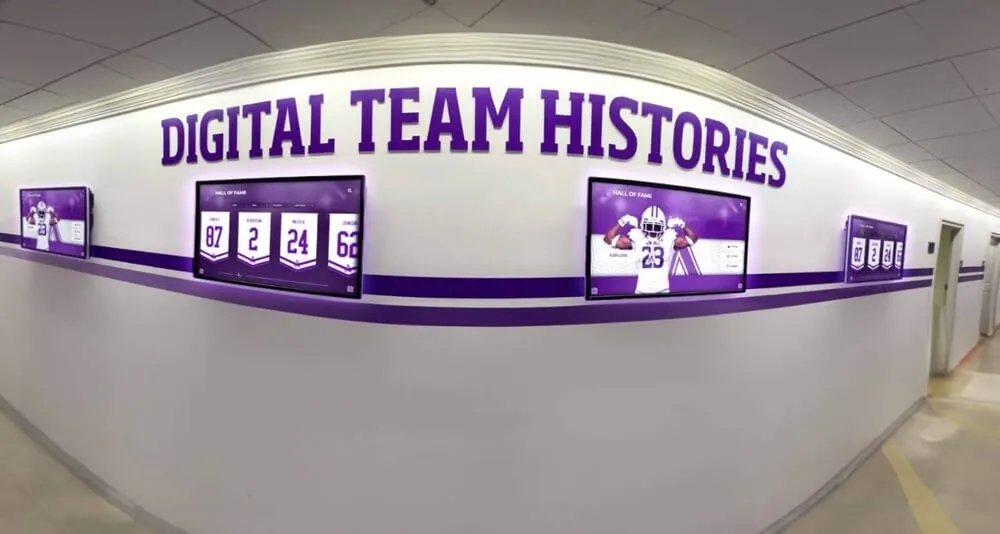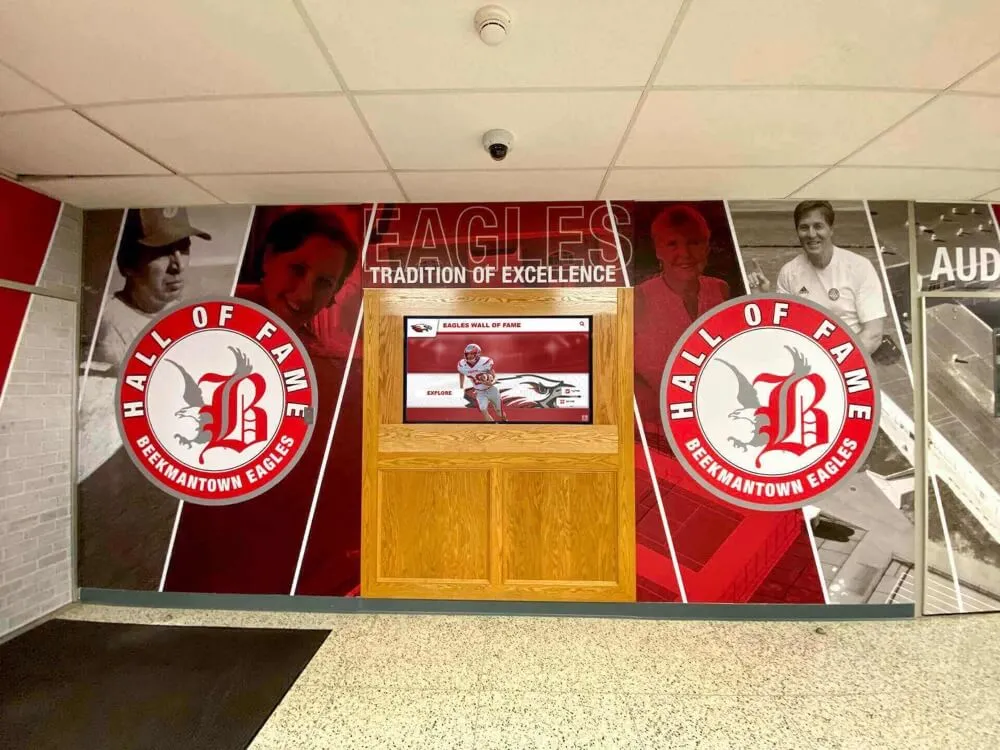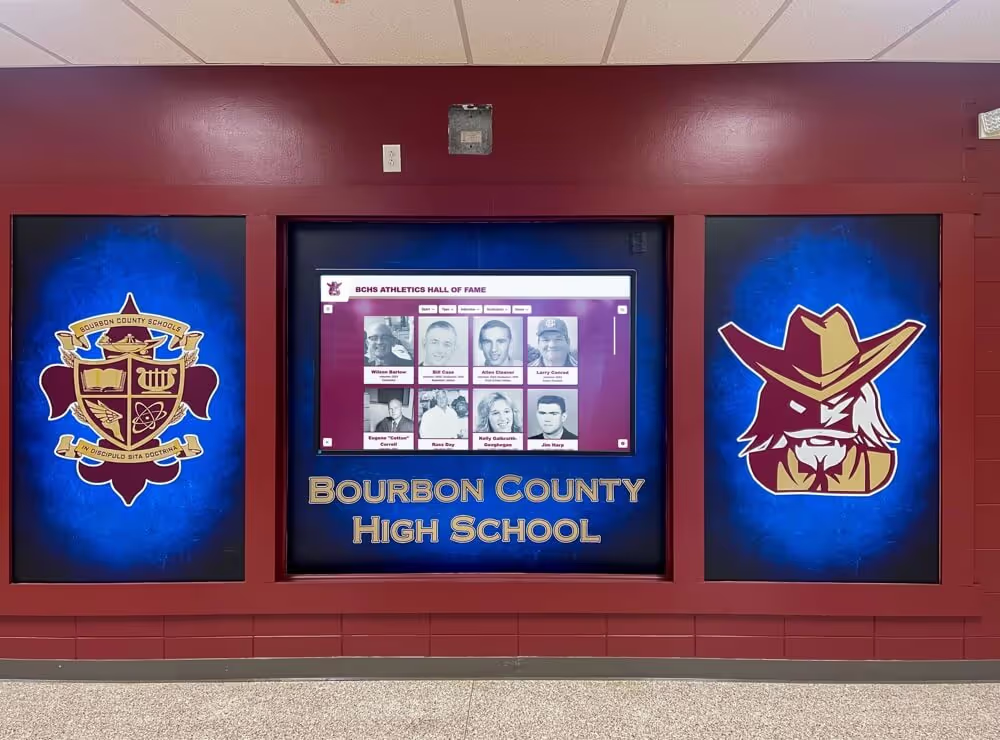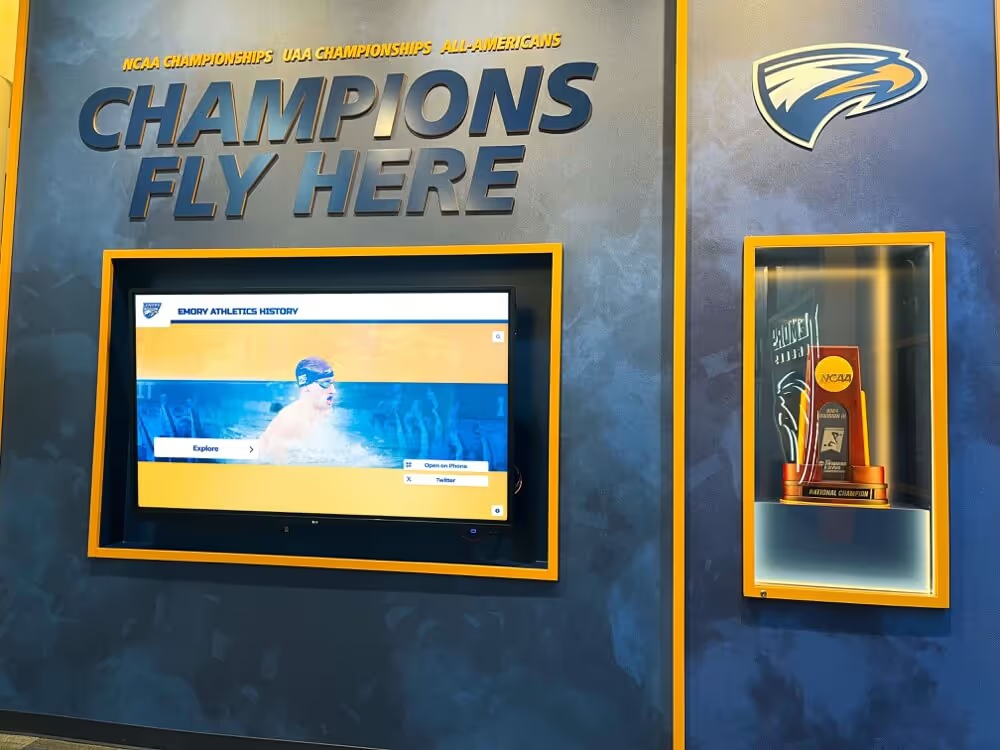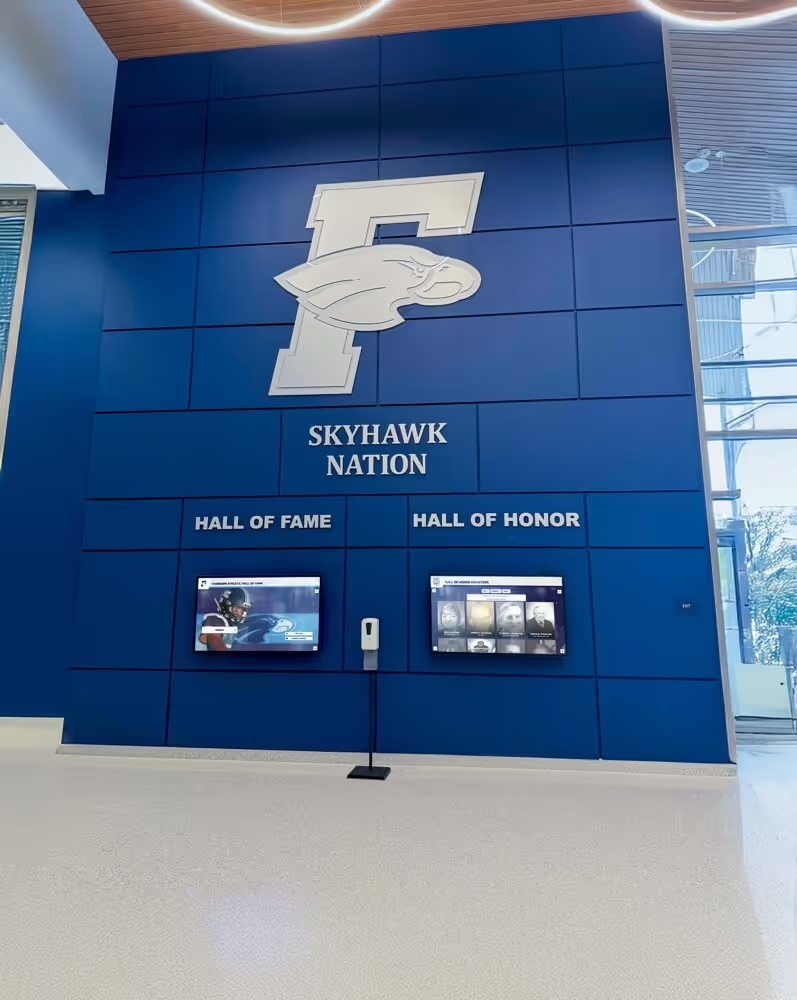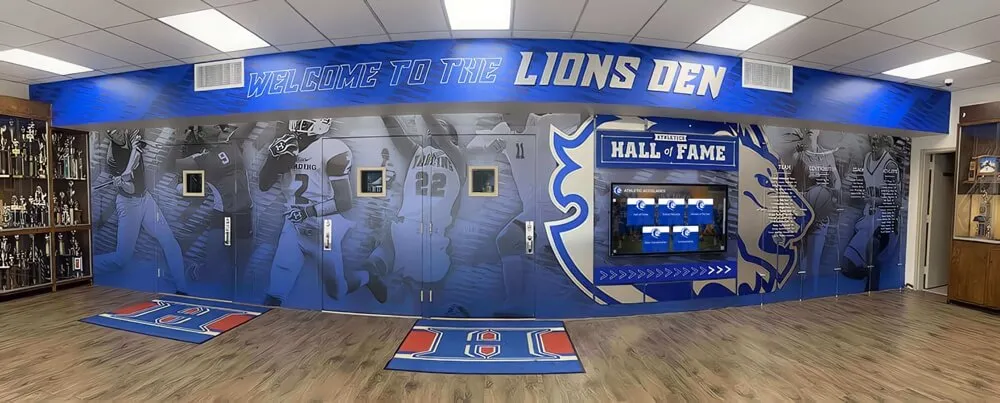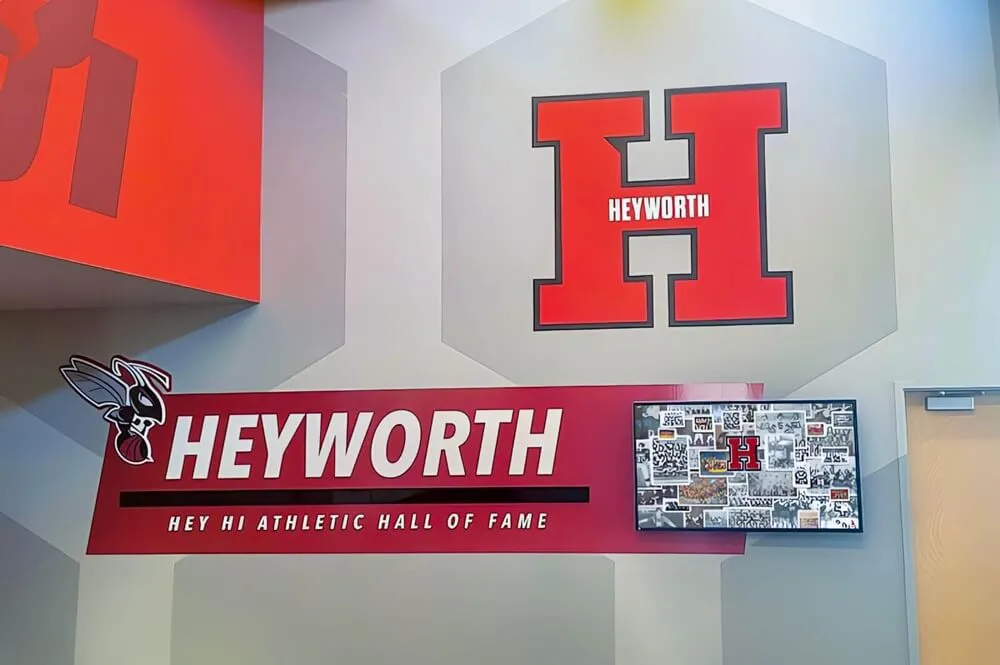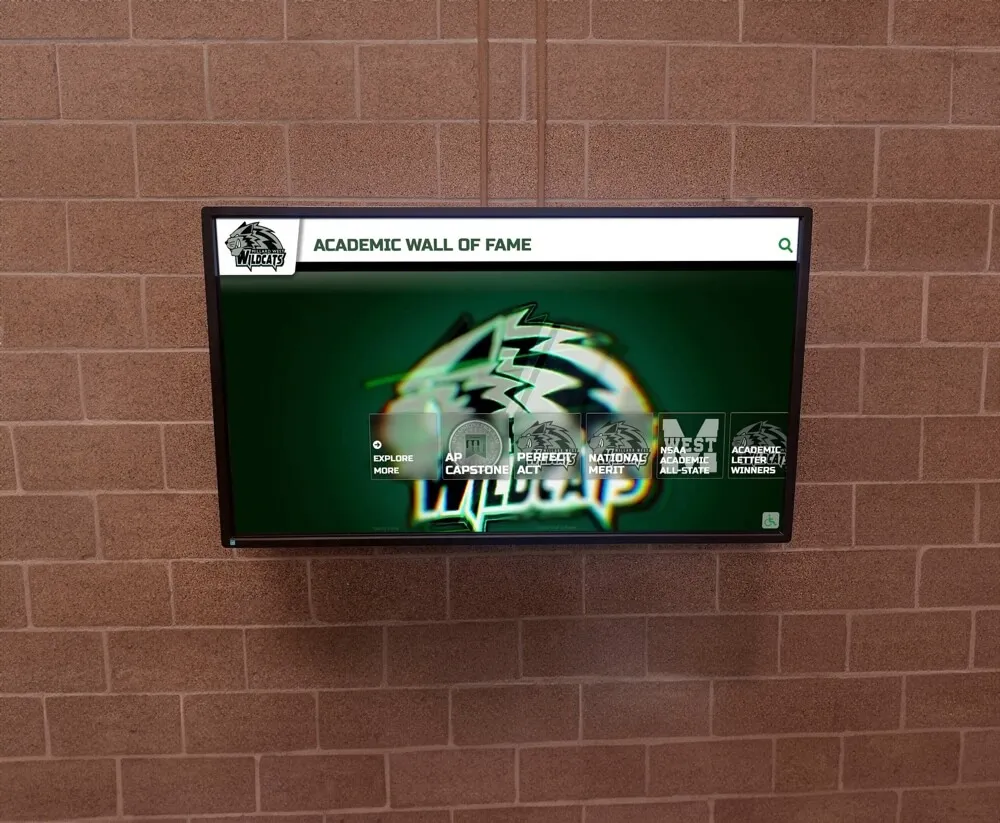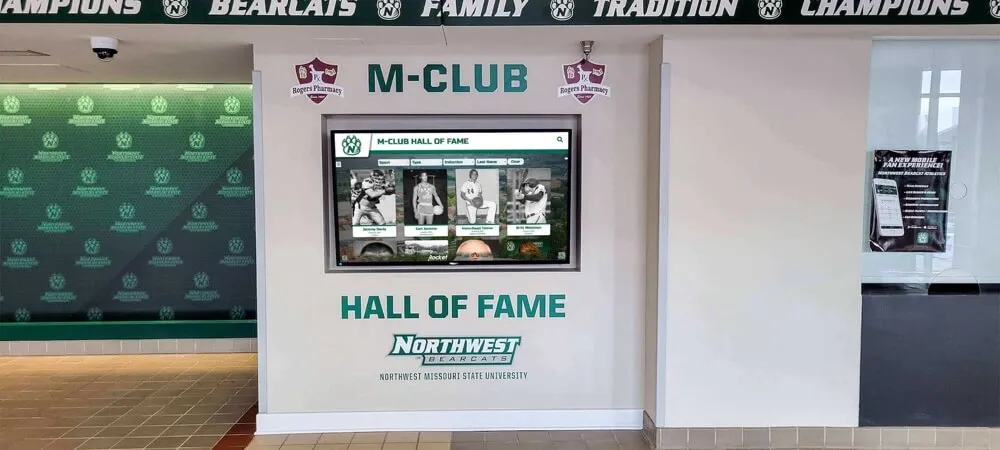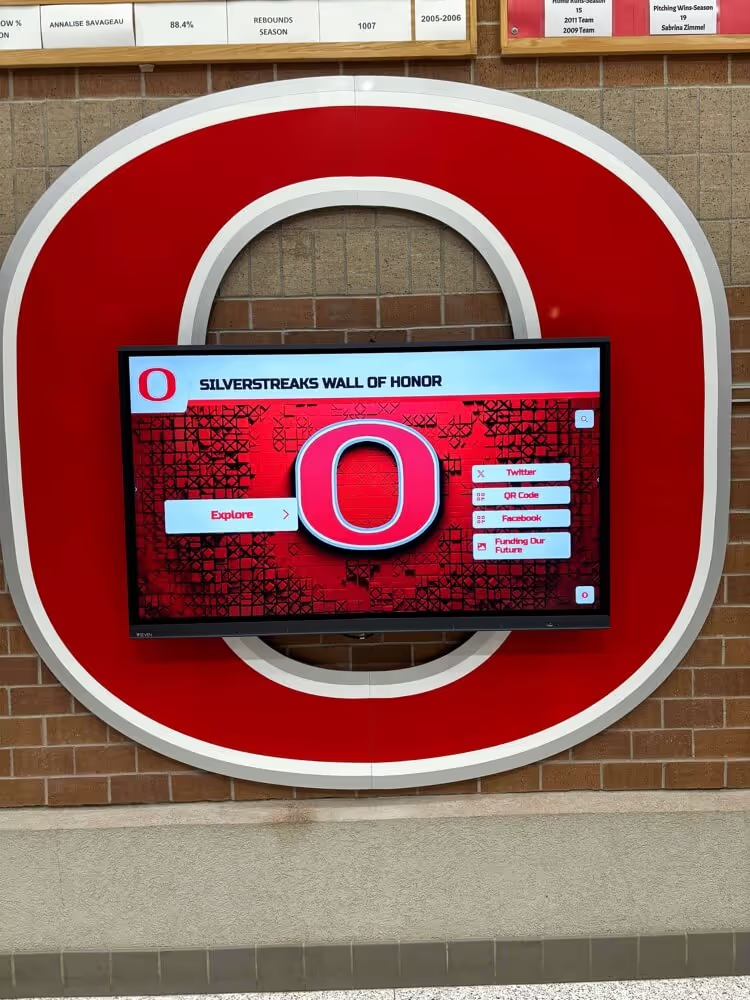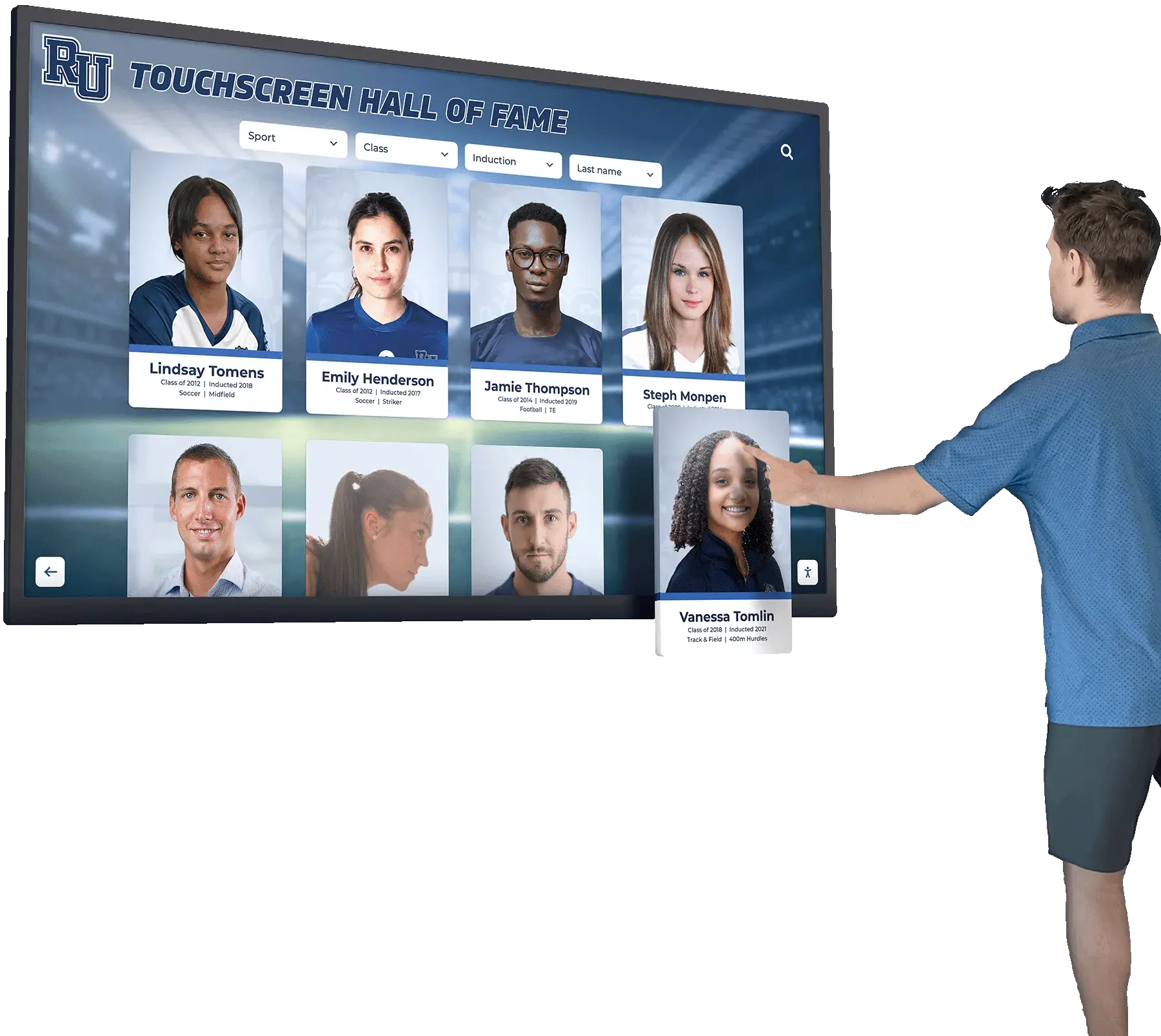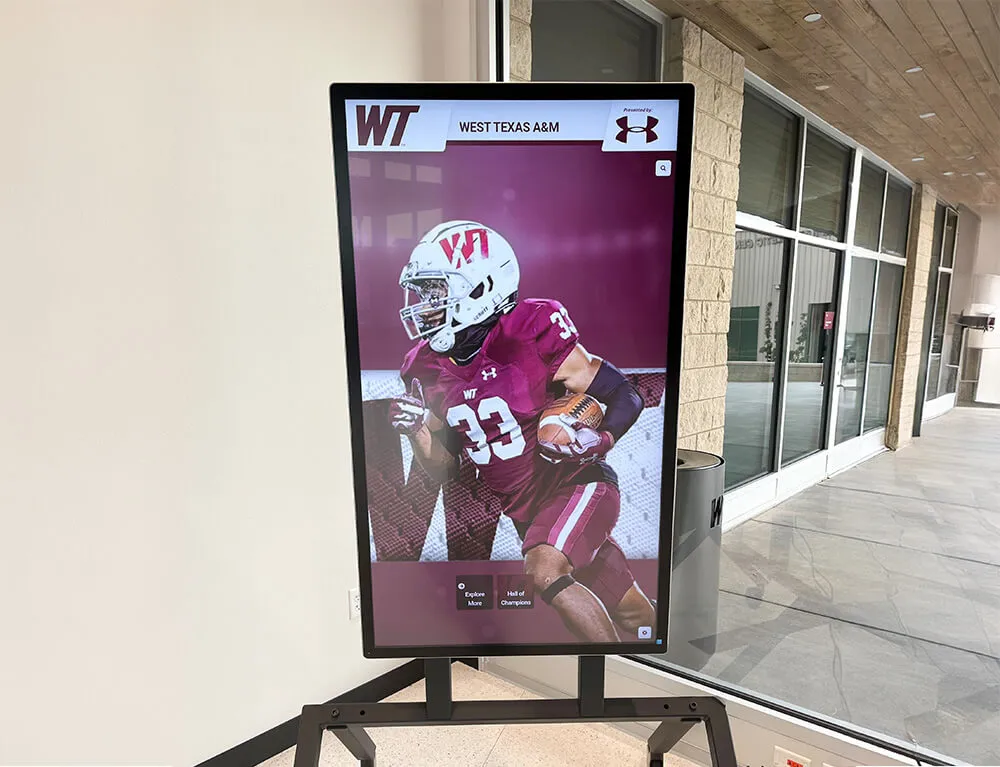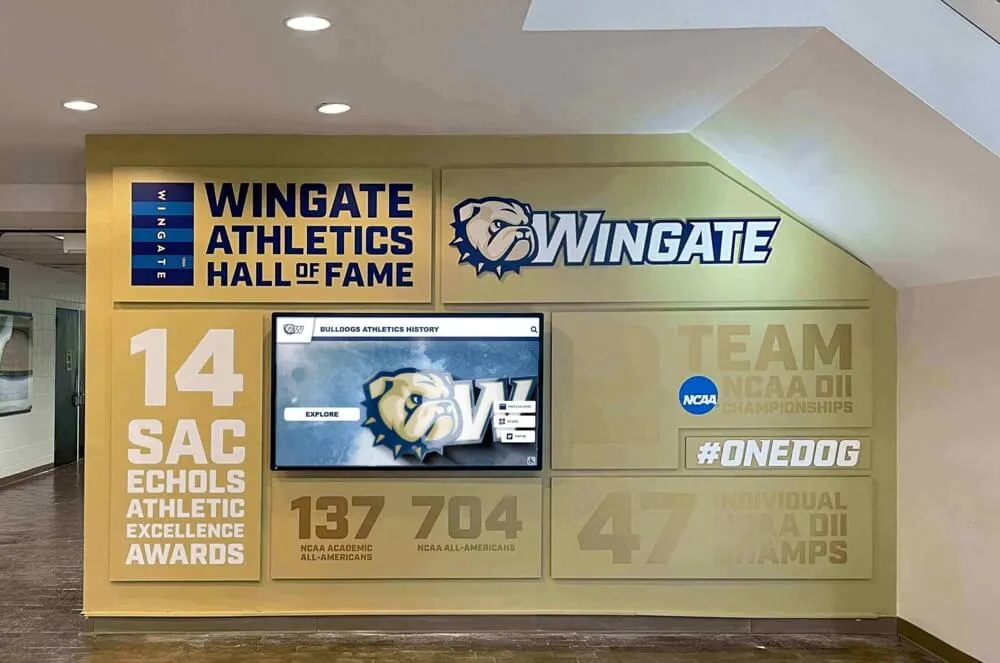Introduction: Why Content Management Makes or Breaks Digital Recognition Displays
Digital recognition displays have revolutionized how organizations honor achievements, but their success hinges on one critical factor that’s often overlooked during the planning phase: content management. While the technology and design capture attention, it’s the ongoing strategy for creating, organizing, updating, and maintaining content that determines whether your investment delivers lasting value or becomes a neglected digital monument.
Effective content management transforms static recognition into dynamic storytelling platforms that evolve with your organization, celebrate new achievements, and maintain visitor interest year after year. Whether you’re managing a corporate hall of fame, school achievement wall, or donor recognition display, the principles and strategies outlined here will ensure your digital investment continues generating value long after installation.
Understanding the Content Management Challenge
The Scale of the Task
Managing content for digital recognition displays involves far more than occasionally adding new names to a list. Consider the typical requirements for a comprehensive recognition system:
- Individual Profiles: Detailed biographies, achievement descriptions, and multimedia content for hundreds or thousands of inductees
- Visual Assets: Professional photographs, video interviews, historical images, and achievement documentation
- Dynamic Elements: Real-time updates, seasonal content, anniversary celebrations, and special recognitions
- Technical Maintenance: Database management, software updates, display optimization, and backup procedures
- Quality Control: Content review, fact-checking, copyright compliance, and brand consistency
Common Content Management Pitfalls
Organizations frequently underestimate the ongoing commitment required for effective content management:
Insufficient Planning: Failing to establish clear processes for content creation, review, and approval before launch Resource Constraints: Assigning content management as an “additional duty” without adequate time or skill allocation Technology Gaps: Choosing systems without user-friendly content management interfaces or adequate training Quality Decline: Allowing content quality to deteriorate over time due to rushed updates or insufficient oversight Stakeholder Fatigue: Losing momentum as initial enthusiasm wanes and content updates become routine tasks
Developing Your Content Management Strategy
1. Establish Clear Objectives and Success Metrics
Before diving into tactical content management, define what success looks like for your digital recognition display:
Primary Objectives Might Include:
- Celebrating achievements and inspiring excellence
- Strengthening organizational culture and pride
- Engaging visitors and stakeholders
- Documenting institutional history and legacy
- Supporting recruitment and fundraising efforts
Measurable Success Metrics:
- User engagement time and interaction frequency
- Content freshness and update frequency
- Stakeholder satisfaction and feedback
- Recognition program participation rates
- Media coverage and social sharing
2. Define Content Categories and Standards
Create a comprehensive content framework that ensures consistency and quality:
Core Content Types
Inductee Profiles
- Biography length and style guidelines
- Achievement description standards
- Photo requirements (resolution, format, professional quality)
- Video content specifications and guidelines
- Contact information and privacy considerations
Multimedia Assets
- Image sizing and formatting standards
- Video length, quality, and hosting requirements
- Audio content guidelines for accessibility
- Interactive element specifications
- Archival and historical content preservation
Dynamic Content
- News and announcement formats
- Seasonal and commemorative content
- Real-time data integration standards
- Social media integration protocols
- Event and celebration content guidelines
3. Implement Robust Content Governance
Establish clear roles, responsibilities, and processes to ensure content quality and consistency:
Content Team Structure
Content Manager: Overall strategy, quality control, and stakeholder coordination Content Creators: Writing, photography, video production, and multimedia development Subject Matter Experts: Alumni relations, HR, academic departments, or relevant organizational units Technical Administrator: System management, updates, and troubleshooting Review Committee: Content approval, fact-checking, and brand compliance
Workflow Processes
Content Development Workflow:
- Identification and nomination of new inductees or content
- Information gathering and research
- Content creation and multimedia development
- Internal review and fact-checking
- Stakeholder approval and sign-off
- Technical implementation and testing
- Publication and promotion
- Performance monitoring and feedback collection
Best Practices for Content Creation and Management
Writing Compelling Recognition Content
Focus on Impact and Story: Move beyond basic biographical information to tell compelling stories about impact, challenges overcome, and lasting contributions. Use specific examples and quantifiable achievements when possible.
Maintain Consistent Voice: Develop a style guide that ensures all content reflects your organization’s tone and values while remaining accessible to diverse audiences.
Balance Detail and Accessibility: Provide enough depth to honor achievements meaningfully while keeping content digestible for casual viewers browsing the display.
Include Multiple Perspectives: Incorporate quotes from colleagues, testimonials from beneficiaries, and context from organizational leaders to create richer, more engaging profiles.
Visual Content Excellence
High-quality visual content distinguishes professional recognition displays from amateur efforts:
Photography Standards
- Use professional or high-amateur quality images
- Maintain consistent lighting, composition, and color balance
- Ensure adequate resolution for display size (minimum 300 DPI)
- Obtain proper usage rights and permissions
- Create backup copies with proper file naming conventions
Video Content Guidelines
- Keep videos concise (2-3 minutes maximum for most contexts)
- Invest in good audio quality—poor sound undermines professional perception
- Include captions for accessibility compliance
- Use consistent branding elements and visual style
- Host videos on reliable platforms with proper embed permissions
Accessibility and Inclusion Considerations
Ensure your content management strategy creates inclusive experiences:
Visual Accessibility
- Provide alt text for all images
- Ensure adequate color contrast ratios
- Use readable fonts and appropriate sizing
- Consider visual impairments in design choices
Content Accessibility
- Include audio descriptions for video content
- Provide transcripts for audio elements
- Use clear, simple language appropriate for diverse audiences
- Offer content in multiple languages when relevant
Physical Accessibility
- Position interactive elements at accessible heights
- Ensure clear sightlines and adequate space for wheelchair users
- Provide audio output options for screen reader compatibility
Technology Tools and Platforms for Content Management
Selecting the Right Content Management System
The choice of content management system (CMS) significantly impacts your ongoing content management success. Key features to evaluate:
Essential CMS Features
User-Friendly Interface: Non-technical staff should be able to add and edit content without extensive training
Role-Based Access: Different permission levels for various team members and stakeholders
Version Control: Track changes, maintain content history, and enable rollback capabilities
Approval Workflows: Built-in review and approval processes before content goes live
Media Management: Robust tools for organizing, optimizing, and managing multimedia assets
Template System: Consistent formatting and layout options that maintain brand standards
Search and Organization: Efficient ways to find, categorize, and manage large amounts of content
Advanced Features Worth Considering
API Integration: Connect with existing databases, HR systems, or alumni management platforms Automated Workflows: Schedule content updates, automate routine tasks, and trigger notifications Analytics Integration: Track user engagement, content performance, and system usage Mobile Management: Update content remotely via mobile apps or responsive web interfaces Backup and Recovery: Automated backup systems and disaster recovery capabilities
Cloud vs. On-Premise Solutions
Cloud-Based Advantages:
- Lower upfront costs and predictable ongoing expenses
- Automatic updates and maintenance
- Scalability and accessibility from anywhere
- Built-in backup and security features
- Integration with modern web services and APIs
On-Premise Considerations:
- Greater control over data and security policies
- Customization capabilities for unique requirements
- One-time licensing costs vs. ongoing subscription fees
- Integration with existing internal systems
- Compliance with specific data residency requirements
Solutions like Rocket Alumni Solutions offer cloud-based content management systems specifically designed for recognition displays, combining ease of use with powerful features tailored to educational institutions and organizations managing large-scale recognition programs.
Content Maintenance and Updates
Establishing Update Schedules
Consistent content maintenance prevents your digital recognition display from becoming stale:
Regular Update Categories
Monthly Updates
- New inductee additions
- Recent achievement highlights
- Upcoming events and celebrations
- Content freshness reviews and minor updates
Quarterly Reviews
- Content accuracy verification
- Photo and video quality assessments
- User engagement analysis
- Technical performance evaluation
Annual Overhauls
- Complete content audit and refresh
- Design and template updates
- System functionality reviews
- Strategic planning and goal assessment
Content Lifecycle Management
Track and manage content throughout its entire lifecycle:
Creation and Publication Phase
- Content development timelines and milestones
- Review and approval tracking
- Publication scheduling and coordination
- Launch promotion and announcement
Active Management Phase
- Regular accuracy updates and corrections
- Performance monitoring and optimization
- User feedback collection and response
- Integration with ongoing organizational activities
Archive and Legacy Phase
- Historical content preservation
- Archive organization and accessibility
- Legacy content integration with new additions
- Long-term storage and backup management
Measuring Content Management Success
Key Performance Indicators
Track metrics that reflect both user engagement and operational efficiency:
User Engagement Metrics
- Average time spent viewing content
- Most frequently accessed profiles and sections
- Interactive element usage rates
- Return visitor patterns and preferences
Content Quality Metrics
- Content freshness and update frequency
- Error rates and accuracy measures
- User feedback and satisfaction scores
- Content completeness and consistency
Operational Efficiency Metrics
- Time from content creation to publication
- Content team productivity and workload distribution
- System uptime and technical performance
- Cost per piece of content created and maintained
Using Analytics to Improve Content Strategy
Modern content management systems provide valuable data for continuous improvement:
Content Performance Analysis: Identify which types of content generate the most engagement and adjust your strategy accordingly
User Behavior Insights: Understand how visitors navigate your content and optimize organization and presentation
Technical Performance Monitoring: Track system response times, error rates, and user experience issues
Feedback Integration: Collect and analyze user comments, suggestions, and complaints to guide content improvements
Integration with Organizational Systems
Connecting with Existing Databases
Effective content management often requires integration with existing organizational systems:
Common Integration Points
Human Resources Systems: Employee records, achievement tracking, and organizational hierarchy data Alumni Management Platforms: Graduate information, contact details, and engagement history Student Information Systems: Academic records, awards, and extracurricular achievements Donor Management Systems: Contribution history, recognition preferences, and contact information Event Management Platforms: Ceremony details, award recipients, and celebration planning
Integration Benefits
Reduced Manual Data Entry: Automatic population of basic information reduces errors and saves time Real-Time Updates: Changes in source systems automatically reflect in recognition displays Comprehensive Profiles: Access to complete organizational data creates richer, more accurate content Streamlined Workflows: Integrated systems enable more efficient content creation and approval processes
Maintaining Data Security and Privacy
Content management for recognition displays must balance public celebration with privacy protection:
Privacy Policy Development: Clear guidelines about what information is displayed publicly and how individuals can control their recognition Consent Management: Processes for obtaining and managing consent for photos, videos, and personal information Data Security Protocols: Secure handling of sensitive information throughout the content management process Compliance Requirements: Adherence to GDPR, FERPA, HIPAA, or other relevant data protection regulations
Training and Change Management
Building Internal Capabilities
Successful content management requires ongoing investment in team capabilities:
Initial Training Programs
- Content management system operation
- Writing and editing for digital displays
- Photography and basic video production
- Brand guidelines and style standards
Ongoing Professional Development
- Advanced content creation techniques
- New technology and platform updates
- Industry best practices and trends
- Analytics and performance measurement
Managing Organizational Change
Transitioning to active content management often requires cultural shifts:
Stakeholder Engagement: Involve key stakeholders in planning and implementation to build buy-in Clear Communication: Explain the benefits and importance of ongoing content management to all involved parties Realistic Expectations: Set appropriate expectations about time commitments and resource requirements Celebrate Successes: Highlight achievements and improvements to maintain momentum and support
Advanced Content Management Strategies
Seasonal and Event-Based Content
Leverage special occasions and organizational events to maintain content freshness:
Anniversary Celebrations: Create special recognition content for organizational milestones and historical commemorations Award Ceremonies: Develop content around recognition events, including live updates and ceremony highlights Seasonal Themes: Adjust visual elements and highlight relevant achievements based on academic calendars, fiscal years, or cultural celebrations Special Campaigns: Design temporary content campaigns around fundraising drives, recruitment periods, or awareness initiatives
User-Generated Content Integration
Engage your community in content creation while maintaining quality standards:
Nomination Systems: Allow community members to submit nominations for recognition with supporting materials Story Contributions: Enable alumni, students, or employees to contribute their own stories and memories Photo and Video Submissions: Create processes for community-contributed multimedia content Social Media Integration: Incorporate relevant social media posts and community-generated content
Interactive and Dynamic Elements
Move beyond static profiles to create engaging, evolving content:
Interactive Timelines: Allow users to explore chronological achievement progressions Comparative Displays: Show achievement trends, statistics, and organizational progress over time Live Data Integration: Incorporate real-time information like current projects, locations, or achievements Gamification Elements: Add interactive features that encourage exploration and engagement
Future-Proofing Your Content Management Strategy
Technology Evolution and Adaptation
Plan for technological changes and emerging opportunities:
Emerging Technologies: Consider how AI, AR/VR, and other innovations might enhance your content management capabilities Platform Scalability: Choose systems and strategies that can grow and adapt with your organization Integration Flexibility: Maintain the ability to connect with new systems and platforms as they emerge Data Portability: Ensure your content can be migrated to new systems when necessary
Organizational Growth Considerations
Design content management strategies that scale with organizational success:
Volume Scalability: Plan for managing hundreds or thousands of additional inductees over time Geographic Expansion: Consider how content management will work across multiple locations or campuses Program Diversification: Prepare for managing different types of recognition programs with varying content needs Resource Planning: Build sustainable financial and human resource models for long-term content management
Conclusion: Building a Sustainable Content Management Culture
Effective content management for digital recognition displays requires more than good intentions and occasional updates—it demands strategic planning, systematic processes, and ongoing commitment from across your organization. The investment in comprehensive content management pays dividends through increased engagement, enhanced recognition impact, and sustained value from your digital display investment.
Key Success Factors
- Clear strategy and measurable objectives
- Robust processes and quality standards
- Adequate resources and training
- Regular monitoring and improvement
- Strong organizational commitment
Common Mistakes to Avoid
- Underestimating ongoing requirements
- Choosing inadequate management tools
- Failing to train content teams properly
- Ignoring user feedback and analytics
- Letting content quality decline over time
The most successful digital recognition programs view content management not as a necessary burden but as an ongoing opportunity to strengthen community connections, celebrate achievements meaningfully, and create lasting value for all stakeholders.
Ready to implement a comprehensive content management strategy for your digital recognition display? Solutions like Rocket Alumni Solutions provide integrated content management systems designed specifically for recognition programs, combining user-friendly interfaces with powerful features that support everything from initial setup to long-term content evolution. Contact us today to explore how professional content management tools can transform your recognition program into a dynamic, engaging celebration of excellence that grows stronger over time.
Frequently Asked Questions About Content Management
How much time should we budget for content management activities?
Plan for 2-4 hours per week for basic maintenance of a small to medium recognition display, with additional time during periods of high activity (awards seasons, anniversaries, new inductee campaigns). Larger programs may require part-time or full-time dedicated resources.
What’s the biggest mistake organizations make with content management?
The most common error is treating content management as a one-time setup task rather than an ongoing strategic activity. This leads to stale content, declining engagement, and diminished recognition impact over time.
How often should we completely refresh our content?
While ongoing updates should be continuous, plan for a major content audit and refresh annually. This includes reviewing all profiles, updating photos and videos, assessing user feedback, and implementing strategic improvements.
Can we manage content ourselves, or do we need professional help?
Many organizations successfully manage content internally with proper training and tools. However, consider professional assistance for initial setup, complex integrations, multimedia production, and periodic strategic reviews.
What happens to our content if we change technology platforms?
Choose content management systems that provide data export capabilities and avoid proprietary formats. Document your content structure and maintain backup copies to ensure portability if platform changes become necessary.




